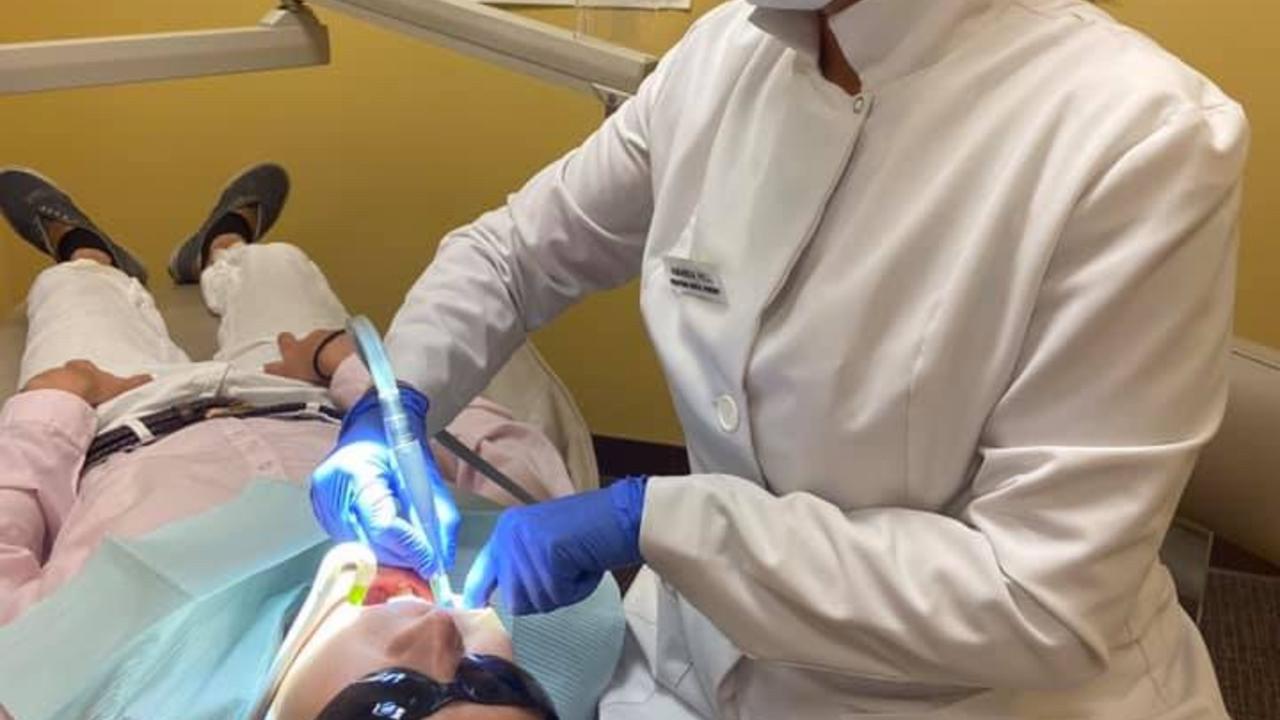Robust Theme
Dec 09, 2019 2020-04-08 7:40Robust Theme
Polishing Implants and Restorations

As with any protocol in healthcare, time lends itself to a reevaluation of the standard of care and if in fact what we do is deemed appropriate. Advances in medicine and dentistry abound and often the systems that seemed black and white get revised.
The American College of Prosthodontists developed a set of clinical practice guidelines for recall and maintenance patients with tooth-borne and implant borne restorations in 2016.1 Included in the recommendations is the use of low abrasive powder streaming technology at the beginning of the maintenance visit to remove biofilm prior to a probing assessment. For most hygienists, a glycine or erythritol based powder streaming device is on a wish list and not actually in their practice. In those cases, we can use the traditional rubber cup polishing technique but with a new knowledge of protocols.
Professional removal of biofilm is an essential part of nonsurgical periodontal therapy and preventive services by dental professionals but perspectives in polishing is ever changing. The debate about polishing is on a continual loop. The ADHA took a stance about polishing having “little therapeutic benefit” in years past and after reading almost a dozen articles the consensus always returns to being selective. I will argue that professional removal of biofilm is indeed therapeutic. Another thought is since ultrasonic scalers effectively disrupt biofilm through oscillating microbubbles and fluid flow the removal is being accomplished in that way as well. Is the goal of polishing just to remove stain? Is it just to remove biofilm? Is it to create a smooth tooth surface so that it minimizes biofilm retention?
If in fact the goal is to smooth a rough surface, the abrasive must be harder than the surface being polished. Several factors affect the rate of abrasion including grit, hardness and particle count as well as pressure and speed of the cups rotation. At what cost is the smoothing of the rough surface to the future of biofilm retention.
Prophy paste as a one size fits all are far from accurate. Dental hygienists should have a variety of pastes in their armamentarium to accommodate the different tooth surfaces when polishing (Wilkins EW, 2009). Polishing pastes now contain various enhancing additives to perform special functions, such as adding to the mineral surface of enamel (calcium phosphate), adding fluoride, decreasing dentin hypersensitivity, or tooth whitening. Calcium phosphate works to stimulate remineralization, causing original hydroxyapatite to form a stronger enamel, enhancing tooth smoothness and increasing enamel luster. (Wilkins EW, 2009).
Implants
The goal for polishing implants is to remove bacterial plaque, gently interrupt the bacterial metabolism and disrupt biofilm. Proper polishing of implants can be done with a soft rubber cup, not brush, with nonabrasive paste. A soft polishing point may be used in areas a rubber cup does not fit. One polishing paste is not appropriate for all teeth, implants or esthetic restorations and some are contraindicated. The hygienist needs to evaluate the ingredients of the polishing agents in paste or powder form and each type of restorative material needs individualized assessment for the best polishing system. Reaching out to companies for their specific recommendations for polishing veneers and crowns is crucial.
Additionally, the perimucosal seal surrounding the implant is more sensitive than gingival tissue around natural teeth; therefore, it’s recommended that implant-supported restorations be polished with a pumice free polishing paste.
Most polishing agents are made up of diamond particles, aluminum oxide, silicates, pumice and calcium carbonate. Aluminum oxide, tin oxide, APF-free, pumice free prophylaxis pastes and low abrasive dentifrices are all considered acceptable polishing abrasives for implants. Acidulated phosphate fluoride (APF) are contraindicated because they may etch the surface of the implant making the titanium prone to corrosion. Susan Wingrove, BS, RDH and expert in implant maintenance recommends Preventech that has a fine grit paste called Next that is pumice free and contains less abrasive diatomaceous earth. Ivoclar Vivadent’s Proxyt fine grit prophy paste is also pumice free and is a silica paste that contains xylitol. Both are kinder not only to the implants but to the restored tooth surfaces.
Conservative polishing is our new standard that considers all factors and that includes the case for implants and implant restorations. Whenever polishing using the lowest speed, lightest pressure and lowest grit paste should be chosen. So until the times comes where air-polishing powder systems are in every dental practice we will selectively decide where and with what to polish.
1. Bidra AS, Daubert DM, Garcia LT, et al. Clinical practice guidelines for recall and maintenance of patients with tooth-borne and implant-borne dental restorations. J Prosthodont. 2016;25 Suppl 1:S32-S40. doi:10.1111/jopr.12416
*Photo credit Amanda C. Hill*


